Results 11,211 to 11,220 of 12096
Thread: Anandtech News
-
07-22-21, 08:40 AM #11211
Anandtech: PlasticArm: Get Your Next CPU, Made Without Silicon
Known for its core design IP that ends up in everything from IoT to smartphones to servers, Arm is now presenting that it has enabled one of its key microcontrollers in a new form factor: rather than using silicon as a base, the company has enabled a processor core in plastic. The technology has been in the works for almost a decade, but Arm has been waiting on the fabrication methods to create a fully working core. Now the company has something working in a tangible medium and the research has been published in Nature.
More...
-
07-22-21, 12:32 PM #11212
Anandtech: OnePlus Announces Nord 2 with Dimensity 1200 SoC
Today OnePlus is announcing the 2021 successor to the OnePlus Nord – the company mid-range line-up phone. The new phone takes the hardware platform from the OPPO Reno 5 Pro in that it is now powered by the new MediaTek Dimensity 1200.
More...
-
07-22-21, 12:32 PM #11213
Anandtech: Cadence Cerebrus to Enable Chip Design with ML: PPA Optimization in Hours,
The design of most leading edge processors and ASICs rely on steps of optimization, with the three key optimization points being Performance, Power, and Area (and sometimes Cost). Once the architecture of a chip is planned, it comes down to designing the silicon of that chip for a given process node technology, however there are many different ways to lay the design out. Normally this can take a team of engineers several months, even with algorithmic tools and simulation to get a good result, however that role is gradually being taken over with Machine Learning methods. Cadence today is announcing its new Cerebrus integrated ML design tool to assist with PPA optimization – production level silicon is already being made with key partners as the tool directly integrates into Cadence workflows.
More...
-
07-22-21, 08:41 PM #11214
Anandtech: Intel Reports Q2 2021 Earnings: Client Computing Leads the Way
Kicking off another earnings season for the tech industry, we as always start things off with Intel, who is the first big chipmaker out of the gate. Over a year into the coronavirus pandemic – and slowly heading out of it – Intel has seen its ups and downs as product demands have shifted and the company’s ability to execute over the long term has been challenged by fab delays. Following a particularly painful (by Intel standards) first quarter, the company is hoping to put those problems behind them with a stronger second quarter.
For the second quarter of 2021, Intel reported $19.6B in revenue, a decline of less than $100M versus Q2’20, and what Intel is calling a flat difference overall. More importantly, perhaps, is that Intel’s profitability has also held quite steady (and significantly improved over Q1), with Intel booking $5.1B in net income for the quarter, a YoY decline of 1%. Overall, with a lone caveat, Intel’s Q2 performance has exceeded their earlier projections.
Intel’s famed gross margin has also recovered on both a quarterly and yearly basis. At 57.1% it’s up almost 2 percentage points higher than Q1, and almost 4 percentage points higher than Q2’20. Intel’s gross margin has been subject to greater than usual fluctuations as of late – typically dropping whenever a major new product is ramping – but at least for Q2 it is on the rise as Intel enjoys a very profitable quarter.
Breaking things down on a group basis, there are a couple of major points to immediately take away. The first is that, while still recorded per Generally Accepted Accounting Principles (GAAP) rules, Intel is all but ready to cut loose its NAND memory business, which it’s in the process of selling to SK hynix. That said, the deal has not been approved and a closing date has not been set, so while Intel is opting to exclude it from their non-GAAP results (and future business projections), they aren’t free of it quite yet.Intel Q2 2021 Financial Results (GAAP) Q2'2021 Q1'2021 Q2'2020 Revenue $19.6B $19.7B $19.7B Operating Income $5.5B $3.7B $5.7B Net Income $5.1B $3.4B $5.1B Gross Margin 57.1% 55.2% 53.3% Client Computing Group Revenue $10.1B -5% +6% Data Center Group Revenue $6.5B +16% -9% Internet of Things Group Revenue $984M +8% +47% Mobileye Revenue $327M -13% +124% Non-Volatile Memory Solutions Group $1.1B flat -34% Programmable Solutions Group $486M flat -3%
Second, this is the first full quarter that can be used for year-over-year comparisons with the coronavirus pandemic. While Intel’s manufacturing side has long since stabilized there, year-over-year numbers are sometimes in odd places as the demand mix a year ago was very unusual, to put it mildly.
For Q2, Intel’s Client Computing Group was once again the biggest winner; that division pulled in $10.1B in revenue, and is up 6% YoY. According to Intel, both laptop and desktop revenue is up, as Intel has surpassed shipping 50 million Tiger Lake processors. That said, these revenue gains are largely volume-driven; ASPs for both desktop and mobile are down, due in part to what Intel is noting to be increased sales of low core count processors. Intel’s improving fab situation has also played a part here – according to the company, 10nm production costs have dropped, helping to improve the division’s operating income.
Meanwhile Intel’s Data Center Group is really starting to feel the impact of the increasingly competitive server environment. While revenue was up 16% versus Intel’s tough Q1, it’s still down 6% on a yearly basis. Breaking that down further, both cloud server provider and communication sales are down, buoyed somewhat by an uptick in enterprise and government sales. But with chip volume and ASPs both down a bit, group revenue can only fall. Intel has long wanted to get away from CCG leading the company’s earnings – in big part by growing its server revenues – but for the moment it looks like that won’t be in the cards. Though as Intel continues to ramp up 10nm production (and thus Ice Lake Xeon production) there is some opportunity to recover in future quarters.
As previously mentioned, Intel is looking to cut loose its NAND business, which is now the only part of the company’s Non-volatile Solutions Group (Optane is DCG). None the less, for the moment Intel still has to account for the group’s revenue, which is down 34% on a yearly basis. Because Intel is downplaying the group so much, they aren’t offering any meaningful written commentary on why revenues are down, but it would seem to be pandemic-related. NSG recorded a very big bump in revenue a year ago, and things have since fallen back towards the industry baseline.
Rounding out Intel’s remaining divisions, both the ioT and Mobileye groups are up significantly on a yearly basis, with revenue jumping 124% in the case of Mobileye. Both groups are benefitting from the post-pandemic recovery, as well as additional design wins in the case of Mobileye. Otherwise, Intel’s final group, Programmable Solutions, saw revenues decline a few percent due to what Intel calls “inventory digestion and supply constraints.”
Overall, Q2’2021 marks a better quarter for Intel on both a quarterly basis and a yearly basis. Along with recovering from their tough Q1 three months ago, Intel this year isn’t facing another fab delay, as Intel’s big 7nm delay was first announced as part of their Q2’20 earnings. To be sure, the company is essentially flat on revenue and profit on a yearly basis – while its competition has generally grown – but as Intel gets further into CEO Pat Gelsinger’s tenure, there is increasing confidence that Intel will hit its goals (and a decreasing window to miss them).
Looking forward, based on their stronger-than-expected Q2 performance and optimism about Q3 and beyond, Intel is increasing its full-year guidance. The company is now projecting revenue to grow on a yearly basis, while gross margin projections remain unchanged at 56.5%. With that said, Intel’s projections all exclude their NAND business, with the company assuming that the deal will be approved by regulators this year as originally planned.
Finally, the next big business update from Intel will come on Monday, when Intel hosts its Intel Accelerated event. That webcast will be focused on Intel’s process and packaging roadmaps, and is a big step in Intel’s efforts to establish their IDM 2.0 strategy. We’re hoping to see more on Intel’s 10nm and 7nm roadmaps there, as well as more on Intel’s next-gen packaging technologies. In the meantime, Intel’s efforts seem to have at least caught the collective ear of Silicon Valley, as the company has revealed today that they’re in talks with 100 potential foundry customers.
Gallery: Intel Q2 2021 Earnings Presentation





More...
-
07-26-21, 06:35 PM #11215
Anandtech: Intel’s First High-Profile IFS Fab Customer: Qualcomm Jumps on Board For 2
Alongside Intel’s sizable announcement today regarding their manufacturing roadmap over the next half-decade, the company is also announcing their first major customer for their third-party foundry service, IFS. And in an example of how Intel’s entry into the contract fab business is going to make for some strange bedfellows, it turns out that major customer is Qualcomm.
Per Intel’s announcement, Intel and Qualcomm are partnering up to get Qualcomm products on Intel’s 20A process, one of the company’s most advanced (and farthest-out) process node. The first of Intel’s “Ångström” process nodes, 20A is due in 2024 and will be where Intel first implements Gate-All-Around (GAA) transistors, one of the major manufacturing technology milestones on Intel’s new roadmap.
Given that 20A isn’t due out for another three years, neither company is saying much more about the partnership at this point – we’re talking about chip designs that are still in their earliest stages – but even being able to name a major customer like Qualcomm is a big deal for Intel. Not only does it show that another major industry player has a degree of faith in what Intel is trying to accomplish with its silicon lithography technology, but it helps to validate Intel’s efforts to open up into the contract fab business.
Meanwhile, an announcement like this opens the door to all kinds of speculation over just what Qualcomm will be building over at Intel. Qualcomm is best known for their mobile SoCs, and the company already has significant experience using multiple fabs as a customer of both TSMC and Qualcomm. So it may be that Qualcomm is looking to build a mainstream mobile SoC or two at Intel as a way to get experience working with Intel and prove that Intel’s fabs will meet their needs. Alternatively, Qualcomm may be looking to take advantage of Intel’s PC-tuned manufacturing lines to produce Nuvia-infused laptop SoCs – which would mean Intel would be directly producing competing chips.
There are a lot of possibilities here over the long-run, though in the short-run it’s likely that Qualcomm is going to play things conservatively. So suffice it to say, it will be interesting to see just what Qualcomm is using their rival’s fabs for in a few years.
Qualcomm is excited about the breakthrough RibbonFET and PowerVia technologies coming in Intel 20A. We’re also pleased to have another leading-edge foundry partner enabled by IFS that will help the U.S. fabless industry to bring its products to an onshore manufacturing site.
-Cristiano Amon, President and CEO, Qualcomm
More...
-
07-26-21, 06:35 PM #11216
Anandtech: Intel's Process Roadmap to 2025: with 4nm, 3nm, 20A and 18A?!
In today’s Intel Accelerated event, the company is driving a stake into the ground regarding where it wants to be by 2025. CEO Pat Gelsinger earlier this year stated that Intel would be returning to product leadership in 2025, but hasn’t yet explained how this is coming about – that is until today, where Intel has disclosed its roadmap for its next five generations of process node technology leading to 2025. Intel believes it can follow an aggressive strategy to match and pass its foundry rivals, while at the same time developing new packaging offerings and starting a foundry business for external customers. On top of all this, Intel has renamed its process nodes.
More...
-
07-27-21, 07:11 PM #11217
Anandtech: AMD Reports Q2 2021 Earnings: Company-wide Growth Drives Doubled Revenue
Continuing our Q2 earnings coverage this month, AMD is next out the gate in reporting their earnings. And, has been the story now for most of the last year, AMD is enjoying explosive revenue growth across the company. CPU, GPU, and semi-custom sales are all up, pushing the limits of what AMD can do amidst the current chip crunch, and pushing the company to new levels of profitability in the process.
For the second quarter of 2021, AMD reported $3.85B in revenue, making for yet another massive jump over a year-ago quarter for AMD, when the company made just $1.93B in a then-record quarter. Now, half-way through 2021, AMD’s financial trajectory is all about setting (and beating) records for the company, as evidenced by the 99% leap in year-over-year revenue – falling just millions short of outright doubling their revenue.
AMD’s big run-up in revenue is also reflected in the company’s other metrics; along with that revenue AMD’s net income has grown by 352% year-over-year, now reaching $710M. And if not for an unusual, one-off tax benefit for AMD’s Q4’2020, this would have been AMD’s most profitable quarter ever – and indeed is on a non-GAAP basis. Meanwhile, as you might expect from such high net income figures, AMD’s gross margin has risen even further and now sits at 48%, up 4 percentage points from the year-ago quarter and 2 points from last quarter.
Breaking down AMD’s results by segment, we start with Computing and Graphics, which encompasses their desktop and notebook CPU sales, as well as their GPU sales. That division booked $2.25B in revenue for the quarter, $883M (65%) more than Q2 2020. Accordingly, the segment’s operating income is (once more) up significantly as well, going from $200M a year ago to $526M this year.AMD Q2 2021 Financial Results (GAAP) Q2'2021 Q2'2020 Q1'2021 Y/Y Q/Q Revenue $3.85B $1.93B $3.45B +99% +12% Gross Margin 48% 44% 46% +4pp +2pp Operating Income $831M $173M $662M +380% +26% Net Income $710M $157M $555M +352% +28% Earnings Per Share $0.58 $0.13 $0.45 +346% +29%
As always, AMD doesn’t provide a detailed breakout of information from this segment, but they have provided some selective information on revenue and average selling prices (ASPs). Overall, client CPU sales have remained strong; client CPU ASPs are up on both a quarterly and yearly basis, indicating that AMD has been selling a larger share of high-end (high-margin) parts. According to AMD this is the case for both desktop and laptop sales, and making this the fifth straight quarter of revenue share gains.
Meanwhile the company is reporting similarly good news from their GPU business. As with CPUs, ASPs for AMD’s GPU business as up on both a yearly and quarterly basis. According to the company this is being driven by demand for high-end Radeon 6000 video cards, as well as AMD Instinct (data center) sales. AMD began initial shipments of their first CDNA 2 architecture-based Instinct accelerators in Q2, opening the spigot there for data center GPU revenue going into Q3.
Moving on, AMD’s Enterprise, Embedded, and Semi-Custom segment has once again experienced a quarter of rapid growth, thanks to the success of AMD’s EPYC processors and demand for the 9th generation consoles. This segment of the company booked $1.6B in revenue, $1035M (183%) more than what they pulled in for Q2’20, and 19% ahead of an already impressive Q1’21. The big jump in revenue also means that the segment is even further into the black on an operating income basis, continuing to close the gap with the Computing and Graphics segment even with the all-around growth.AMD Q2 2021 Reporting Segments Q2'2021 Q2'2020 Q1'2021 Computing and GraphicsRevenue $2250M $1367M $2100M Operating Income $526M $200M $485M Enterprise, Embedded and Semi-CustomRevenue $1600M $565M $1345M Operating Income $398M $33M $277M
Overall, both the enterprise and semi-custom sides of this segment are up on a yearly basis. AMD set another record for server processor revenue this quarter on the strength of EPYC processor sales. Meanwhile semi-custom revenue was up on both a yearly and a quarterly basis, reflecting the continued demand for the latest generation of consoles.
Looking forward, AMD’s expectations for the quarter and for the rest of the year have been bumped up once again. For Q3 the company expects to book $4.1B (+/- $100M) in revenue, which if it comes to pass will be 46% growth over Q3’20. Meanwhile AMD’s full year 2021 projection now stands at a 60% year-over-year increase in revenue versus their $9.8B FY2020, which is 10 percentage points higher than their forecast from the end of Q1.
Finally, while AMD doesn’t have any major updates on the ongoing Xilinx acquisition, the company has reiterated that it remains on-track. Which means that if all goes according to plan, it will close by the end of the year.
More...
-
07-28-21, 08:19 AM #11218
Anandtech: The SilverStone SX1000 SFX-L 1 kW PSU Review: Big Power for Small Form Fac
Today we are taking a look at the most powerful SFX-L PSU on the planet, the SilverStone SX1000. As its name suggests, the SX1000 can provide up to 1 kW of power, an unprecedented figure for an SFX form factor power supply. But does such a powerful PSU have a place in the market for compact computers?
More...
-
07-29-21, 09:12 AM #11219
Anandtech: Intel Beast Canyon NUC Review: Desktop Tiger Lake Debuts in SFF Gaming Pow
Intel kick-started a form-factor revolution in the early 2010s with the introduction of the ultra-compact NUCs. The systems were meant to be an alternative to the tower desktops used in many applications where the size, shape, and the system capabilities were mostly unwarranted. The success of the NUCs enabled Intel to start reimagining the build of systems used in a wider range of settings.
More recently, the introduction of the Skull Canyon NUC in 2016 was Intel's first effort to make a gaming-focused SFF PC. And desktop-focused Compute Elements (essentially, a motherboard in a PCIe card form-factor) launched in early 2020 meant that full-blown gaming desktops could credibly come under the NUC banner. Also last year, the Ghost Canyon NUC9 – the first NUC Extreme – made a splash in the market with support for a user-replaceable discrete GPU. Ghost Canyon was extremely impressive, but the restrictions on the dGPU size and high-end pricing were dampeners.
Thankfully, the introduction of Tiger Lake has enabled Intel to make multiple updates in its Compute Element lineup. Incorporating some tweaks and changes learned from their Ghost Canyon experience, Intel has now put forward its flagship NUC for 2021: Beast Canyon. With a desktop-class CPU and ability to accommodate most discrete GPUs in the market, the Beast Canyon NUC promises a lot. Does it manage to exorcise the ghosts of its predecessor? Read on to find the answer.
More...
-
07-29-21, 09:12 AM #11220
Anandtech: JEDEC Publishes LPDDR5X Standard at up to 8533 Mbps
JEDEC and the JC-42.6 Subcommittee for Low Power Memories has announced the publication of the new JESD209-5B standard which now includes improvements to LPDDR5, as well as an extension for the standard in the form of new LPDDR5X.
More...
Thread Information
Users Browsing this Thread
There are currently 14 users browsing this thread. (0 members and 14 guests)




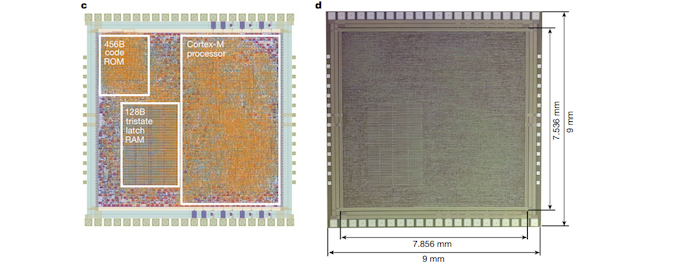

 Quote
Quote
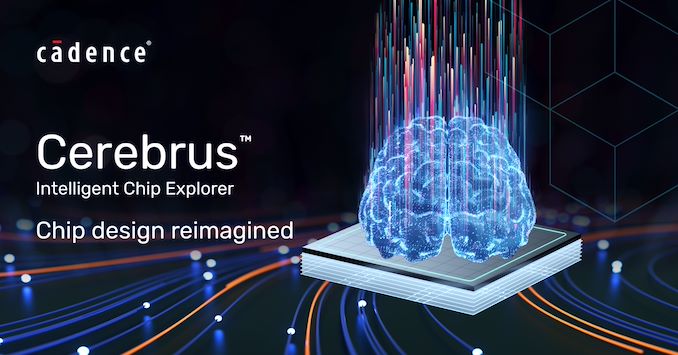
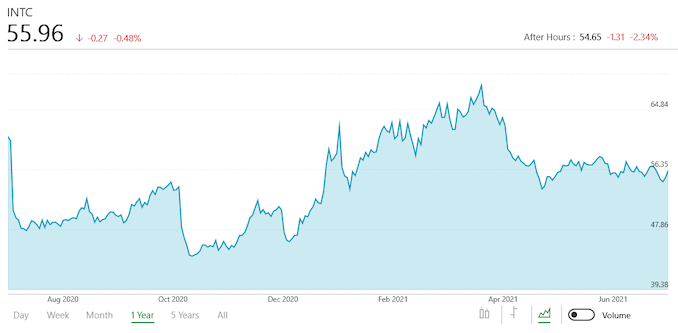
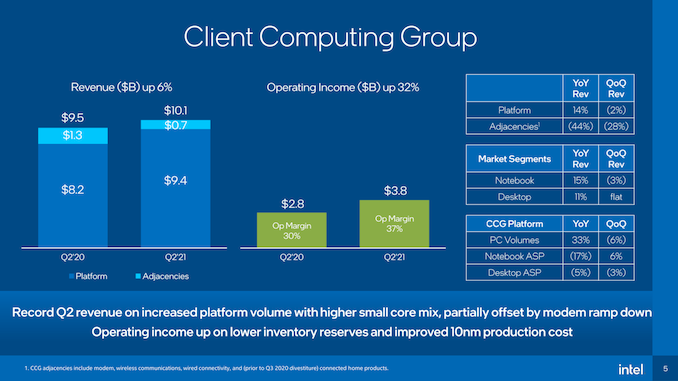
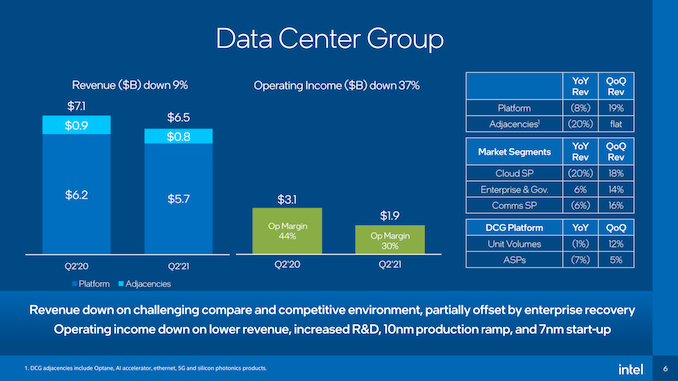
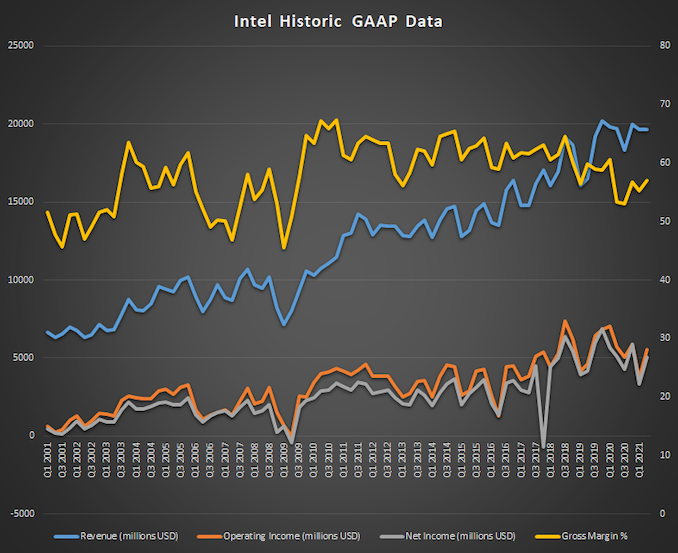
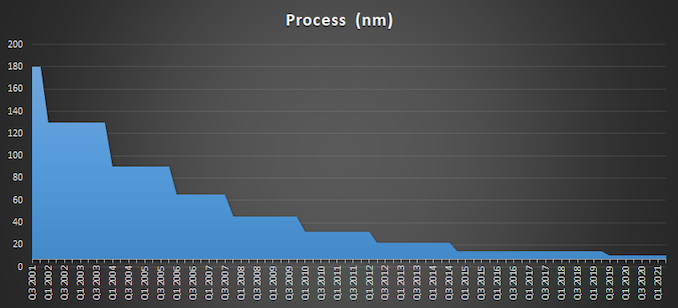
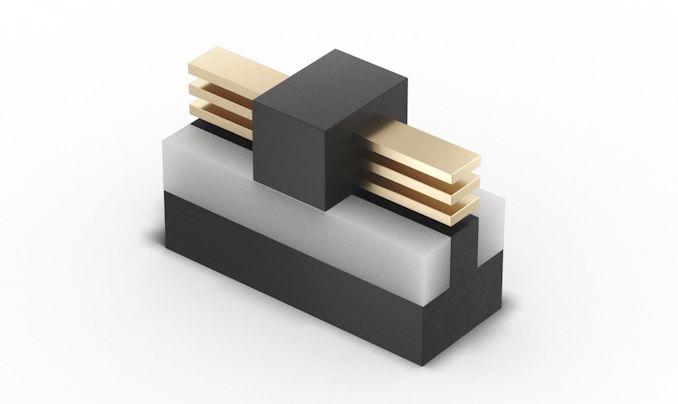
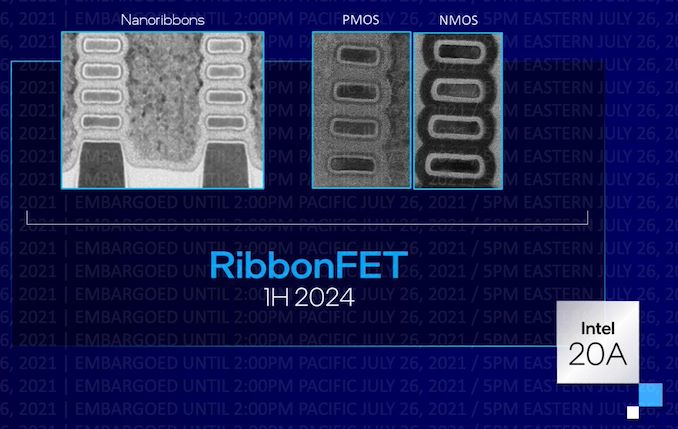
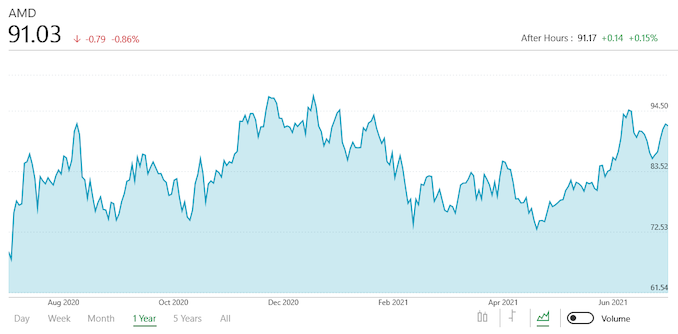

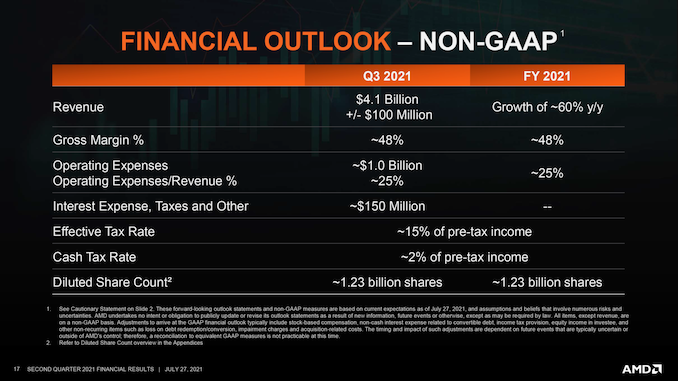
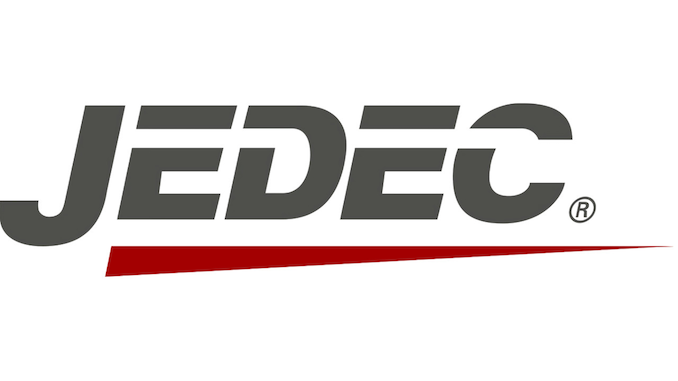
















Bookmarks